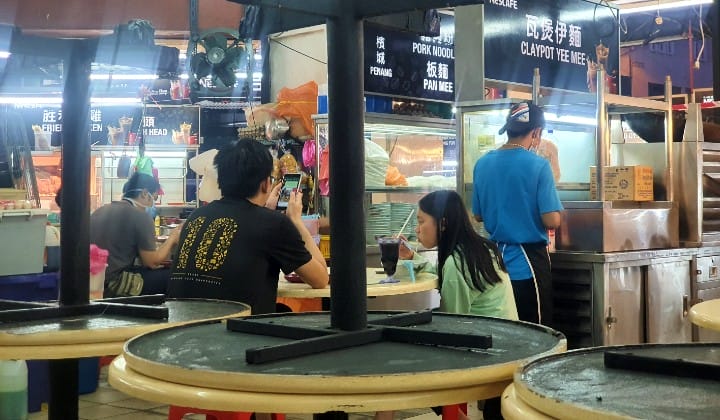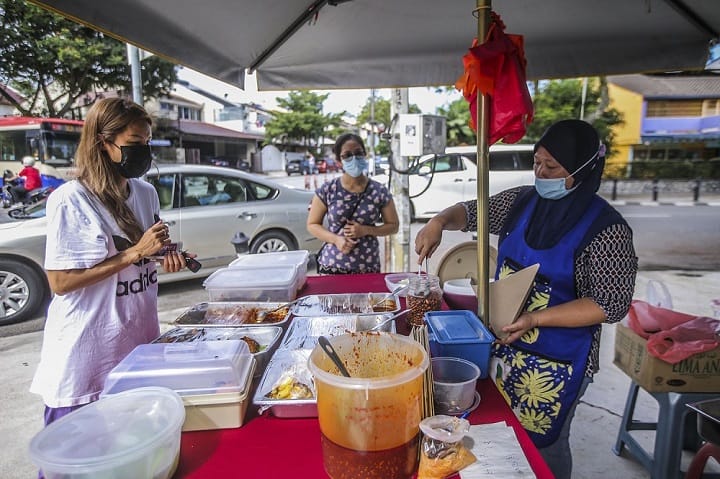Is there still a chance for small and medium-sized businesses? [OPINION]
Even before the pandemic hit, SMEs already had to compete against international conglomerates and franchises that were more widely accepted by the public.

By
Dr Helmi Zakariah & Bibi Nurshuhada Ramli
Inclusivity & Digital Gap, Selangkah Team
The world literally shut down when Covid-19 came without warning.
All of our exciting plans – to go on vacation, to start a family, to kickstart projects – went down the drain as we were abruptly placed under lockdowns and movement restrictions.
Companies had no choice but to cease their operations, resulting in millions of people globally losing their jobs.
In Malaysia itself, a way for these individuals to financially survive was by tapping into the business industry. After all, opportunities are everywhere as long as you know where to look.
While this might bring hope to some, it was sadly a threat to small and medium-sized enterprises (SMEs) who are bearing the biggest brunt of the pandemic’s economic impact. Even before the pandemic hit, SMEs already had to compete against international conglomerates and franchises that were more widely accepted by the public.

Now that a new group of opponents had simultaneously entered the arena, the competition inevitably got even more intense.
Based on data from the Companies Commission of Malaysia (SSM), 82,555 new business had been registered under it between April and July this year.
This means that the supply for the sales and services industry has multiplied in size but unfortunately the targeted buyers were facing a financial crisis. As a result, a large number of unlucky SMEs had no choice but to close up shop due to a lack of profit.
According to SSM, 32,469 of its registered companies (not limited to SMEs only) had shut down between March and September this year.
It shows that only enterprises with loyal customers and an effective sales strategy were able to stay afloat. Still, their journey wasn’t always smooth-sailing.
The war isn’t over
In March, the Malaysian government had implemented the Movement Control Order (MCO) as a bid to contain the spread of Covid-19. This resulted in people being locked up at home and business premises temporarily closing.
Most affected by this ruling were SME restaurateurs, hawker stall operators and shop owners who rely on visitors. Imagine the loss.

(Credit: Hari Anggara/Malay Mail)
The government’s decision to eventually loosen the standard operating procedure (SOP) was seen as good news, but things were still far from normal.
Largely people were still cautious of contracting the virus if they were to leave the safety of their own homes. Most would only dare to go out for grocery shopping.
Should they choose to dine out, only two persons were allowed to sit at a table anyway. Might as well eat at home if they had a large family.
From the food service operators’ perspective, the number of diners that they can welcome at any one time is limited. So, no matter how popular they are with the crowd, there is still that drawback.
Internet as a saviour

As an alternative, many SME entrepreneurs have turned to e-commerce. Besides Shopee and Lazada, social media too can act as a marketing platform if done effectively and creatively. F&B enterprises on the other hand rely on delivery services like GrabFood and Foodpanda.
These avenues still have their own disadvantage but it’s undeniably helpful in terms of reaching out to new potential customers. However, it may be challenging for those who aren’t exposed to such technology.
Closing the digital gap for SME
To reduce the people’s financial burden, the government shows its support through various initiatives. According to the New Straits Times, they include: “funding, rescheduling of loan repayments, loan repayment moratorium, and online entrepreneurship training and guides as well as implementation of high-impact programmes.”
For SMEs in Selangor, the state government offers their assistance through the Belanjawan Selangor 2021. RM2 million is allocated to help enterprises and kindergarten teachers while RM6.08 million will be used to develop entrepreneurship programs.
Social media users on the other hand had made viral the hashtag #sapotlokal that urged the public to support local businesses.
At the end of the day, however, digitalisation is key. Technology is making our lives easier and it certainly can help the SME with their ventures. Since it’s developing at a rapid pace, they just have to catch up.
The rakyat’s best interest at heart
Things won’t ever resume to the way they were as long as the pandemic persists. No one knows when that will end. For now, we just have to adhere to the SOP and get used to the new normal.
Introduced in May as a contract tracing system, Selangkah is always concerned about the people’s plight. Aligned with its mission to improve the lives of the people, Selangkah is working hard to find the solution. And as long as the future is still bleak for SMEs, Selangkah will keep on trying.
Dr Helmi Zakariah is a panel member of the World Health Organization (WHO) and the International Telecommunications Union (ITU)

If you’d like to have your opinion shared on TRP, please send it via email at editorial@therakyatpost.com with the title “OPINION:” or through social media on TRP’s Facebook, Twitter, and Instagram.








